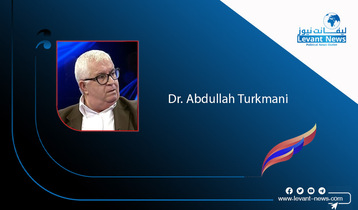-
Significant summit and low point of terror

In another week when the world was rightly focused on Russia’s invasion of Ukraine, an unprecedented Middle Eastern summit attracted far less attention than it would have otherwise have done. Israel’s foreign minister Yair Lapid, joined his colleagues from the US, Egypt, Morocco, the UAE and Bahrain at Sde Boker in the Negev desert.
And it was not only the summit that was downplayed in global media coverage: both before and after it 11 people in Israel were killed in terrorist attacks, the worst toll in six years, underlining the importance of a mutually acceptable solution to the world’s most toxic and divisive conflict.
And three Palestinians who belonged to Islamic Jihad also died in subsequent military operations in Jenin. The assessment of the Israeli security establishment is that the country is just at the beginning of a wave of terror.
The Negev meeting was especially significant because it included all the signatories of the Abraham Accords (except Sudan) all of which are dependent on Washington’s goodwill and are generally opposed to the renewal of the Iranian nuclear deal of 2015 abandoned by Donald Trump under pressure from the then Israeli prime minister Benjamin Netanyahu.
The location of the summit was symbolic too in terms of Arab recognition of the legitimacy of the Jewish state: Kibbutz Sde Boker was where Israel’s founder and first prime minister, David Ben-Gurion, lived when he stepped down in 1963 – a fact which all the participants must have been aware of. BG - as he is widely known - is also buried there.
It was the first occasion that the Arab signatories of the accords had met in Israel. The timing also generated criticism from the Palestinians. It took place on the eve of Land Day, on March 30, which commemorates the Palestinian response to Israel’s expropriation of thousands of acres of land in 1976. Israel is currently isolating unrecognized Bedouin communities in the Negev.
These talks took place just a week after Egypt’s President Abdel-Fattah el-Sissi hosted Israeli Prime Minister Naftali Bennett and the UAE’s Crown Prince Mohammed bin Zayed al-Nahyan for a friendly and well-publicized summit in Sharm al-Sheikh. Efforts were made to add Jordan’s foreign minister to the list of invitees of both summits— in vain, as it turned out.
Attention focused on the Sde Boker summit discussions dealing with the looming renewed nuclear deal with Iran, as the US wanted to reassure its regional allies that it is fully aware of their concerns. They wanted to be present together with US secretary of state Anthony Blinken to convince Washington that they are prepared act in unison.
Israel is already working with the UAE, Bahrain and Saudi Arabia (albeit behind closed doors in intelligence, missile defence etc) against Iran and the Yemeni Houthi rebels who are backed by Tehran, along with Lebanon’s Hizbullah and Iraqi Shia militants.
“The Negev Summit signals that these new partners are now working together more closely than ever, simply because they have to — in part because they know that the US now has other preoccupations and priorities, and fear that it underestimates the dangers posed by Iran,” wrote one Israeli journalist.
With Washington understandably focused on Russia’s invasion of Ukraine and its long-term strategic implication, it makes sense for Israel and its newish Arab allies to concentrate on regional priorities. But the recent spate of terrorist incidents are a stark but vivid reminder that the conflict with the Palestinians is not going to disappear any time soon.
This year’s combination of Ramadan, Passover and Easter has raised tensions on both sides of the pre-1967 Green Line. They have also been escalating because of the recent spate of terrorist incidents. The perpetrator of the first attack in Beersheba was a Negev Bedouin (an Israeli citizen) and two other Arab Israelis – both from Umm al-Fahm - in the second case in Hadera.
Those involved in the first two attacks were affiliated with ISIS (Daesh) and had served time in prison for trying to join the caliphate in Syria. They framed their actions in the wider context of the jihad to cleanse the Middle East of its Christian and Jewish invaders.
The terrorist who killed five people in the ultra-Orthodox town near Tel Aviv called Bnei Brak was a Palestinian from the West Bank who was not affiliated with any organization and had allegedly been motivated to carry out his attack because of the recent death of a friend of his in clashes with the Israeli army.
All these attacks sparked a frenzy of stories in Israeli media about the assumption that ISIS had become a serious threat to national security. It is unlikely to turn out like that. All the evidence is that all four terrorists were “lone-wolves” and that Hamas and Islamic Jihad, based in the Gaza Strip, are still far more dangerous.
It is important to point out that with diplomatic relations and shared interests strengthening across the Middle East between Israel and its Arab partners, the 54-year-long occupation of the West Bank remains as deeply entrenched as ever. Both the region and the wider world need to be reminded of that in these unpredictable and uncertain times.

BY: IAN BLACK
You May Also Like
Popular Posts
Caricature
BENEFIT Sponsors BuildHer...
- April 23, 2025
BENEFIT, the Kingdom’s innovator and leading company in Fintech and electronic financial transactions service, has sponsored the BuildHer CityHack 2025 Hackathon, a two-day event spearheaded by the College of Engineering and Technology at the Royal University for Women (RUW).
Aimed at secondary school students, the event brought together a distinguished group of academic professionals and technology experts to mentor and inspire young participants.
More than 100 high school students from across the Kingdom of Bahrain took part in the hackathon, which featured an intensive programme of training workshops and hands-on sessions. These activities were tailored to enhance participants’ critical thinking, collaborative problem-solving, and team-building capabilities, while also encouraging the development of practical and sustainable solutions to contemporary challenges using modern technological tools.
BENEFIT’s Chief Executive Mr. Abdulwahed AlJanahi, commented: “Our support for this educational hackathon reflects our long-term strategic vision to nurture the talents of emerging national youth and empower the next generation of accomplished female leaders in technology. By fostering creativity and innovation, we aim to contribute meaningfully to Bahrain’s comprehensive development goals and align with the aspirations outlined in the Kingdom’s Vision 2030—an ambition in which BENEFIT plays a central role.”
Professor Riyadh Yousif Hamzah, President of the Royal University for Women, commented: “This initiative reflects our commitment to advancing women in STEM fields. We're cultivating a generation of creative, solution-driven female leaders who will drive national development. Our partnership with BENEFIT exemplifies the powerful synergy between academia and private sector in supporting educational innovation.”
Hanan Abdulla Hasan, Senior Manager, PR & Communication at BENEFIT, said: “We are honoured to collaborate with RUW in supporting this remarkable technology-focused event. It highlights our commitment to social responsibility, and our ongoing efforts to enhance the digital and innovation capabilities of young Bahraini women and foster their ability to harness technological tools in the service of a smarter, more sustainable future.”
For his part, Dr. Humam ElAgha, Acting Dean of the College of Engineering and Technology at the University, said: “BuildHer CityHack 2025 embodies our hands-on approach to education. By tackling real-world problems through creative thinking and sustainable solutions, we're preparing women to thrive in the knowledge economy – a cornerstone of the University's vision.”
opinion
Report
ads
Newsletter
Subscribe to our mailing list to get the new updates!




















